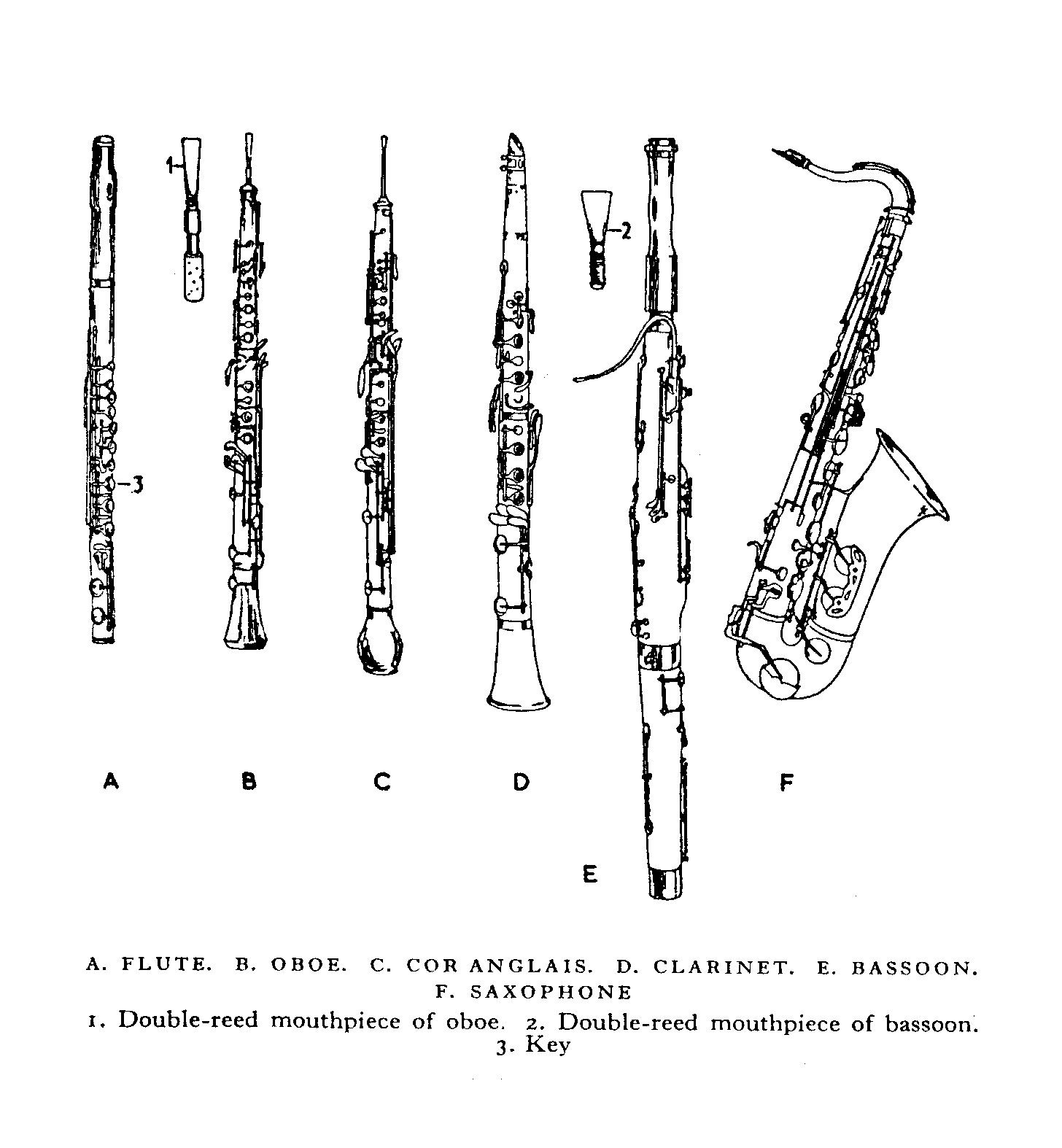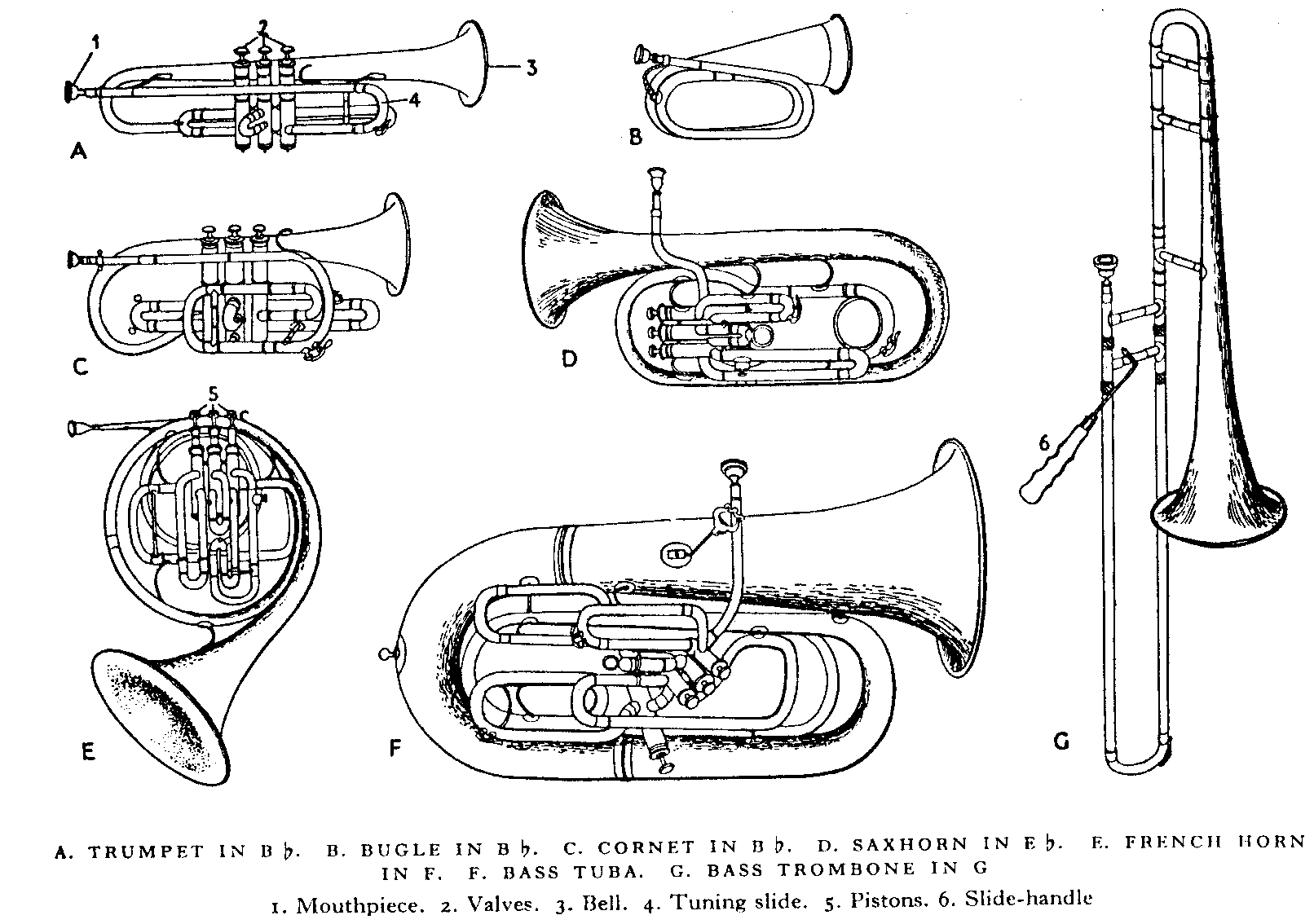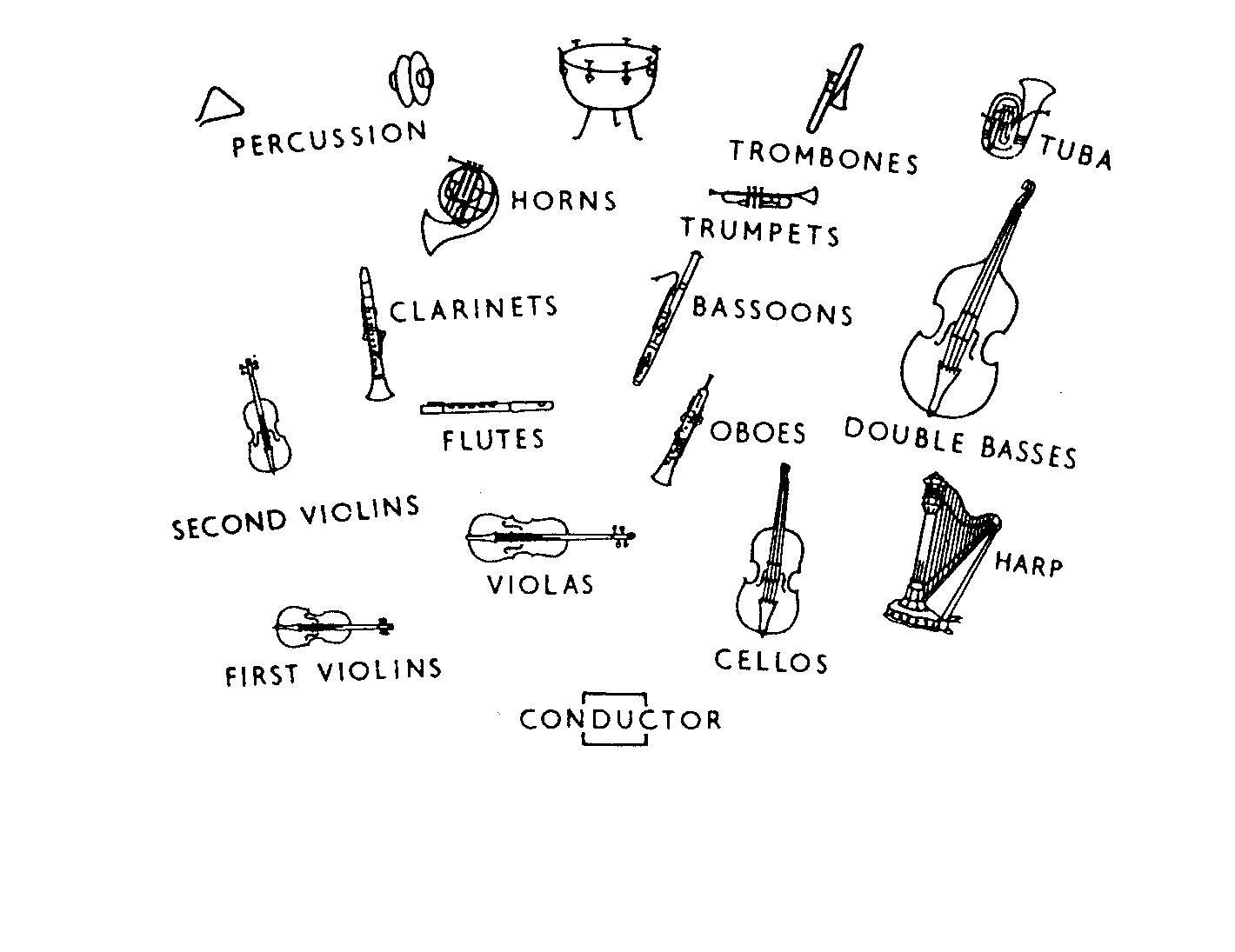
- •Unit 1. Classical Music
- •Is fit for treason, stratagems and spoils;
- •1. Are you a music lover? What role does music play in your life? Express your ideas in a 2-page composition “Music in My Life”.
- •2. Comment on the excerpt from “The Merchant of Venice” given above. Do you agree that one can’t trust a person who is indifferent to music?
- •Recital – evening – prom
- •Item – work – piece
- •Part – movement
- •Concert – concerto – recital – show
- •Part – movement – item – number – work
- •To play the… - to play from music – to read music
- •Miscellanea
- •There’s music in our speech
- •1. Explain the meaning of the following words and phrases:
- •2. Which idiom best fills each space?
- •3. All the following sentences include a musical idiom, with one word missing. Use the words below to complete the sentences.
- •Exercises
- •Renaissance (c.1400 – c.1600)
- •Baroque (c.1600 – c.1750)
- •Classical (c.1750 – c.1830)
- •Early Romantic (c.1830 – c.1860)
- •Late Romantic (c.1860 – c.1920)
- •The Post ‘Great War’ Years (1920 to the present day)
- •Exercises
- •Speaking “for” and “against” classical music
- •Exercises
- •Exercises
- •Mr. Smeeth Goes to a Symphony Concert
- •Exercises
- •Wood-wind instruments
- •Position of players in a modern orchestra
- •(From ‘Incidental Music to “a Midsummer Night’s Dream”)
- •A Guide to Classical Listening
- •Exercises
- •Exercises
- •Mozart’s don giovanni opens in prague
- •Exercises
- •The pros and cons of rock/pop music
- •Exercises
- •The language of rock
- •Exercises
- •Справка
- •Folk music
- •Exercises
- •Jazz, sound of surprise
- •Exercises
- •The tunes you can’t refuse
- •Exercises
- •1. A description of the subject.
- •2. Detailed comments on the successful and unsuccessful features of the subject.
- •3. Summing up and recommendation.
- •Music on the mind
- •Music – the drug of choice for Britain’s Olympians
- •С Бахом… под Майкла Джексона
- •Exercises
- •Types of Music
- •1. Classical music
- •12. Orchestral music
- •13. Chamber music
- •Concert, Recital, Evening
- •14. Concert
- •15. Recital
- •16. Evening
- •17. Verbs used with concert/recital
- •Listen is not used here. Nor should it be used in translating such sentences as:
- •Concert Programmes and repertoires
- •18. Work, item, number, piece
- •19. Repertoire, repertory
- •Classical Works
- •Instrumental Works
- •Concertos are written for an orchestra with solo instrument(s) and the instrument is often specified as follows: a piano concerto, a violin concerto, Beethoven’s third piano concerto, etc.
- •26. Movement, part
- •27. Special names for musical works
- •Vocal Works
- •28. Song
- •29. Use of on with names of instruments
- •Some Common Musical Terms Note, Music, score
- •33. Choir, chorus
- •34. Types of choir
- •A Symphony Orchestra (Instruments and Players)
- •36. Conductor, leader
- •37. Tune, Melody, Theme, Subject
- •38. Types of Opera grand opera – (an) opera with a serious story in which all the words are sung
- •39. Opera Singers
- •40. Use of articles with opera
- •42. Modern Music
- •To cut a single
- •To disband (see also split up)
- •Drummer
- •To be/become a one-hit wonder
- •Supplementary materials Text 1.
- •Text 2.
- •Text 3.
- •Text 4.
- •Text 5.
- •Text 6.
- •Rethinking mozart On the 250th anniversary of his birth, a more realistic picture of the composer's musical genius is emerging.
- •Exercises
- •1. Practise reading the words from the text. Learn their Russian equivalents.
- •2. Define the following words and word-combinations. Say in what context they were used in the article.
- •3. Explain the difference between:
- •Text 7.
- •Styles of Jazz
- •Text 8. Evita (music by Andrew Lloyd Webber, lyrics by Tim Rice)
- •1. A Cinema In Buenos Aires, 26 July 1952
- •9. The Lady's Got Potential
- •10. Charity Concert/The Art Of The Possible
- •13. A New Argentina
- •14. On The Balcony Of The Casa Rosada 1
- •19. Rainbow Tour
- •Contents
- •Unit 5. The Effects of Music on the Human System ………………71
- •A short guide to composer data ………………………………………………….163 sources
Exercises
1. Practise reading the words from the text. Learn their Russian equivalents.
giant, to bow, bow, delectable, dreary, infinite(ly), to signal, to slither, tumultuous, unison
2. Find in the text the words and phrases with the following meanings:
1) noisy; 2) to cry; 3) bewildered; 4) violently; 5) beauty; 6) chaos; 7) sorrowful (2 words) ; 8) often; 9) to seize, to get hold of; 10) delightful; 11) to applaud; 12) in this way
3. Define the lexical items:
twanging, to twang; plucking, to pluck;
to have a peep at sth; to be about to do sth; to be clean above one’s head; to make much of sth; to get the hang of sth.
Pick out any two of the items from point “b” and make up 2 sentences by rephrasing them.
4. Study vocabulary items 35-37 (see Glossary).
5. Study the pictures:
Wood-wind instruments

BRASS INSTRUMENTS

Position of players in a modern orchestra

6. Interpret the sentences:
“…Those brass instruments didn’t think Smeeth had much of a chance.”
“…odd bits of magic kept floating Back into his mind...”
7. you must have noticed that the performance of Brahms’ symphony is described, as it were, on two planes. One of these is Mr Smeeth’s somewhat naïve perception. Yet, some parts of the description, certainly, reflect the author’s superior knowledge and appreciation of the music, so that we get a kind of double-picture. Find in the text:
the extracts that reflect Mr Smeeth’s perception,
the extracts given on behalf of the author.

Text 6 provides a pattern of describing a piece of classical music. Listen to “Intermezzo” by F.Mendelssohn and answer the questions.
“Intermezzo” by Felix Mendelssohn
(From ‘Incidental Music to “a Midsummer Night’s Dream”)
I. Who is the author of the piece of music you’ve just heard? What do you know about the composer? What musical form is being analysed?
II. What is the general mood of the excerpt? (The music is plaintive/lyrical/dynamic/foreboding/vigorous/cheerful…)
III. How many melodic phrases can you identify in the intermezzo?
IV. Listen to Phrase 1 and answer the questions:
Is the theme introduced in the opening bars or is it preceded by an introduction?
Which instruments begin to perform the theme?
brass b) stringed c) woodwind d) percussion
Which instruments join them eventually?
a) brass b) stringed c) woodwind d) percussion
According to what principle is the melodic phrase composed?
one section replaces another in performing the theme b) the predominance of the strings
V. Listen to Phrase 2 and answer the questions:
How does it begin?
a) it begins with the apprehensive sounds from the violins b) with an infinitely tender melody performed by the brass section
What principle determines the melodic structure of Phrase 2?
a) that of a permanent major-minor key-change b) that of dialogue between the violins and the woodwind instruments
Which instruments mark the climax of the extract?
a) the violins b) the clarinets c) the flutes
VI. Listen to Phrase 3 and answer the questions:
Which instruments are prominent in this phrase?
a) violas and cellos b) violins and the woodwind
2. Which instruments provide an accompaniment for the prevailing instruments?
a) violins and the woodwind b) flutes and bassoons
3. Which instruments are heard in the finale?
a) the strings b) the brass
Which instruments are heard at the culmination point of the finale?
violins b) flutes c) French horns
VII. What feelings does the music evoke in the listener? What images does it create in the listener’s mind?
Intermezzo – a short piece of music played between the main parts of an opera or a longer piece of music.
Mendelssohn, Felix (1809-47), German composer, one of the leading figures of early 19th-century European romanticism.
Born Jakob Ludwig Felix Mendelssohn-Bartholdy on February 3, 1809, in Hamburg, he was the grandson of the noted Jewish philosopher Moses Mendelssohn. (The name Bartholdy was added to his surname when the family inherited property from a relative of that name, but he was always known by his original name.) As a child he converted with his family to Protestantism. Mendelssohn first appeared in public as a pianist at the age of 9 and performed his first original compositions when 11 years old. His masterly overture to A Midsummer Night's Dream was composed at the age of 17; the famous “Wedding March” and the rest of his incidental music to the play were written 17 years later. A revival of public interest in the works of Johann Sebastian Bach was directly attributable to Mendelssohn, who in 1829 conducted the first performance since Bach's death of his Passion of St. Matthew.
Mendelssohn appeared as a pianist and conductor throughout Europe, making frequent trips to England. His romanticism shows most clearly in his use of orchestral color and in his fondness for program music depicting places, events, or personalities. Structurally, Mendelssohn's music adheres to classical forms. It is lyrical and graceful, always clear, and never revolutionary.

